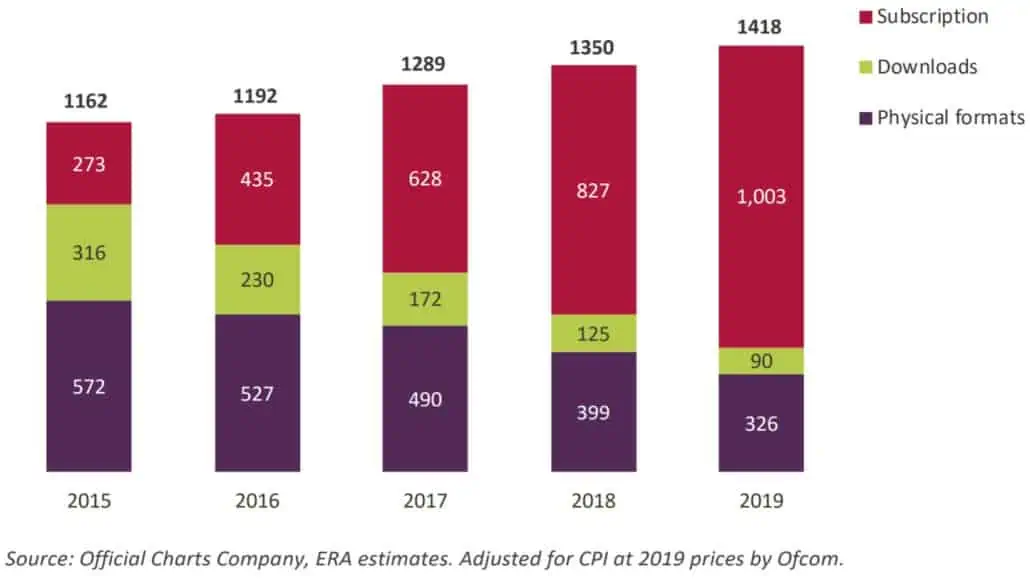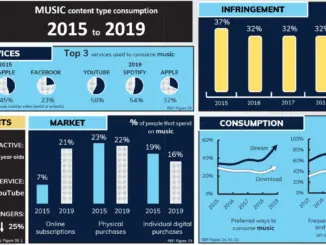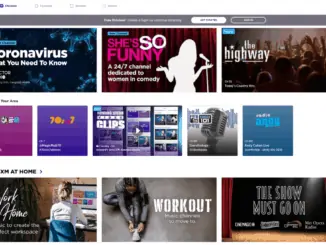
Radio listening declined in UK during pandemic because of lockdown according to Ofcom, the UK’s communications regulator. In Ofcom’s third annual Media Nations research report it reviews trends in the TV and online video sectors as well as radio and other audio sectors.
Radio listening key findings
Radio listening was broadly resilient during lockdown, but the sector will need to weather the advertising market downturn exacerbated by COVID-19.
• 14% of online adults stopped listening to the radio in the first few weeks of lockdown with reduced in-car listening and the closure of workplaces the biggest influencers of this. Its share of overall audio listening time remained stable, at 70%.
• For young people, the amount of audio time accounted for by radio decreased with lockdown, from 27% beforehand to 18% during, with more time given to music-video channels/sites, audiobooks and podcasts.
• YouTube was used by 75% of online adults in the first two months of lockdown, with many using it to listen to music. Among all genres of content watched/listened to on the platform, music was the most popular, accessed by a third of all online adults.
• Radio broadcasters will be affected by reduced radio advertising expenditure, which fell by 3% in real terms over 2019 to £703 m, with a further decline of 21% forecast for 2020.
Listening habits changed in lockdown
The proportion of audio time spent with radio held up overall but dropped among younger audiences with the shifts among younger people most pronounced. Before lockdown, time spent listening to the radio in-vehicle and at work was predominately driven by adults under the age of 55 (70% and 82% respectively in Q1 2020). Therefore, radio listening by younger adults would have been significantly affected by the Government’s stay-at-home orders, with commuting and other travel practically halting overnight and resulting in one in seven of the adults Ofcom surveyed during lockdown saying they had stopped listening to the radio since lockdown began.
Despite the change in circumstances, when looking at time spent with any audio, the proportion of time spent with radio for all adults remained relatively unchanged in the first few weeks of lockdown compared to pre-lockdown (70% vs. 71%). However, this was not the case for younger adults – the proportion of their audio time that was spent listening to radio declined from 27% to 18%, with music video channels/sites, particularly YouTube, and audiobooks and podcasts the main beneficiaries.
Audio listening key findings
A third of online adults listened to music streaming services, podcasts or audiobooks in lockdown
- About a third (34%) of the online adults aged 16+ Ofcom surveyed said they had listened to music streaming services, podcasts or audiobooks in the previous week. Younger adults aged 16-34 were more likely to have listened to these services (55%) compared to those aged 55+ (20%). Listening to music streaming services proved most popular, with a quarter of online adults claiming to have done this. Those aged 16-34 were much more likely than older adults to have listened to a music streaming service or podcast, while listening to audiobooks showed less variation across age groups.
- Audio-streaming services responded to lockdown by offering users a range of content and features via their platforms.
- Audible released more than 200 children’s books that it said would be free to access as long as schools stayed closed.
- Spotify introduced a group listening feature for Premium members that allows two or more users in close proximity to share control over playlists. The streamer launched a global campaign called ‘Listening Together’ to capture and visualise the moments when listeners around the world click ‘play’ on the same song.
Podcast listening had plateaued but was boosted in lockdown
Figures from RAJAR indicate that growth of podcasts in recent years may have stalled in Q1, with 16.1% of adults now listening each week, down slightly from 16.5% the previous quarter. The largest decrease has been among 25-34-year-olds, the age group who have tended to be the biggest users of this medium. Some older age groups are still discovering podcasts, though, with an increase in listeners aged 45-54 and over 64.
Spotify’s continued investment in podcasts, to complement its music offering, seems to be paying off. The number of weekly podcast listeners using the service increased from 24% to 37%, bringing it into line with BBC Sounds and Apple. The most popular podcast genre among weekly listeners is entertainment, listened to by 80% of listeners, followed by discussion and talk shows (78%) and comedy (77%). BBC Sounds users are more likely to say they listen to discussion and talk show podcasts (84%) and news and current affairs podcasts (82%) than users of other services.
UK music streaming expenditure exceeded £1bn in 2019

Consumer expenditure on recorded music in the UK grew by 5% in real terms in 2019, continuing the positive growth trend since 2014. As in previous years, this year-on-year growth was driven by increased spend on subscription music streaming services. Expenditure on these by UK consumers grew by 21% in real terms to reach £1,003 m in 2019 equivalent to 71% of total consumer expenditure on recorded music. Spend on physical media has continued to decline overall, as the growth in LP expenditure (up 4% to £96 m) and other physical formats (e.g. cassette tapes) was not enough to offset the 26% year-on-year decline in expenditure on CDs.
Between 2015 and 2019, the proportion of industry (wholesale) revenues generated by streaming increased from 20% to 59% to reach £629 m, of which 90% was from subscription streaming. The long-term impact of COVID-19 on music streaming is unclear. According to Spotify, although advertising revenues have felt the impact of the crisis, during periods of lockdown the number of monthly active users grew in key markets, despite falls in consumption.
For more detailed statistics on radio and audio listening habits together with information on TV broadcasting the 101 page report, Media Nations 2020, is free and can be downloaded here.




